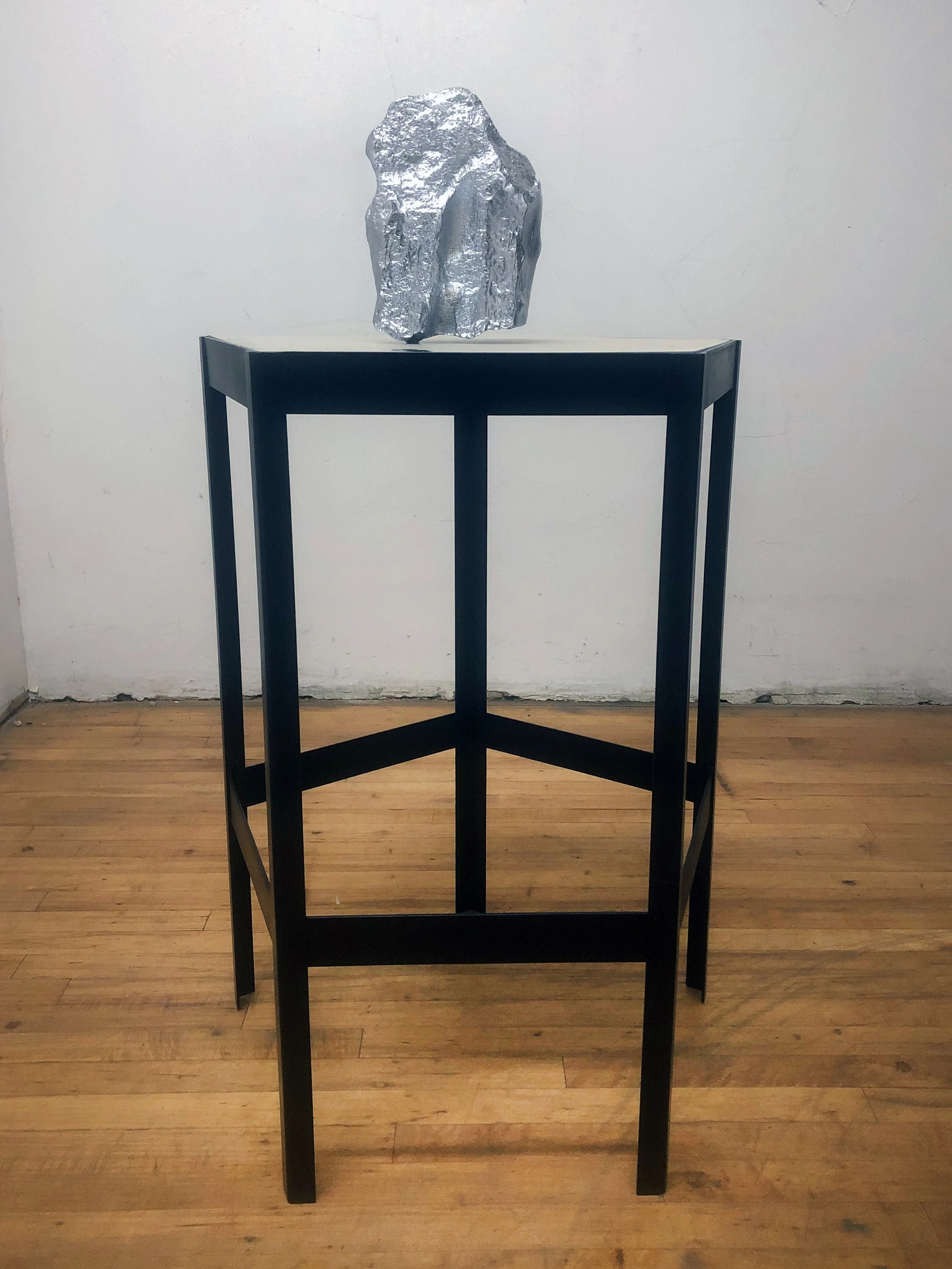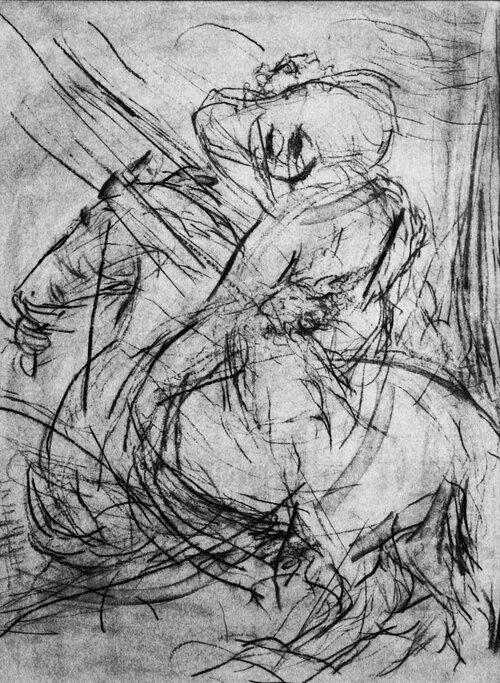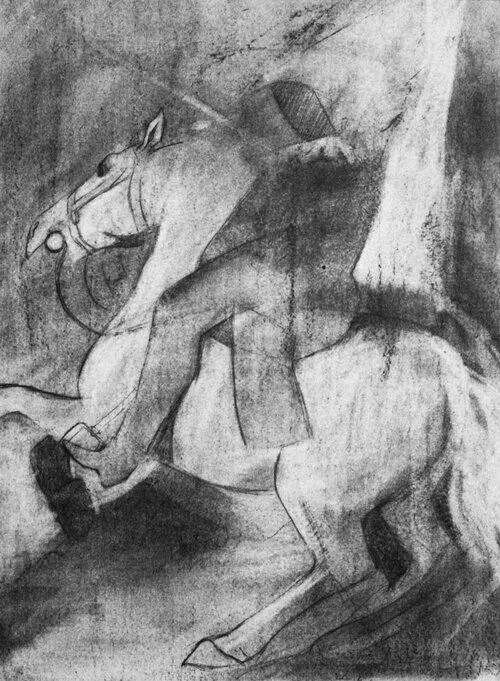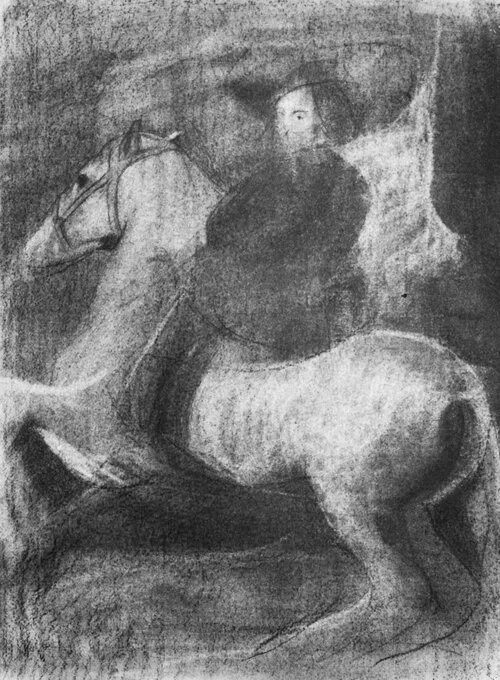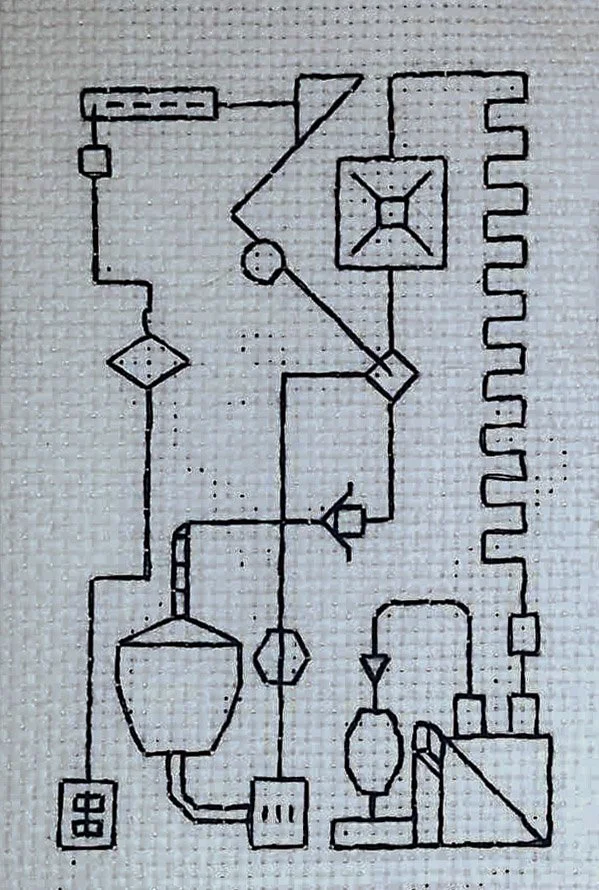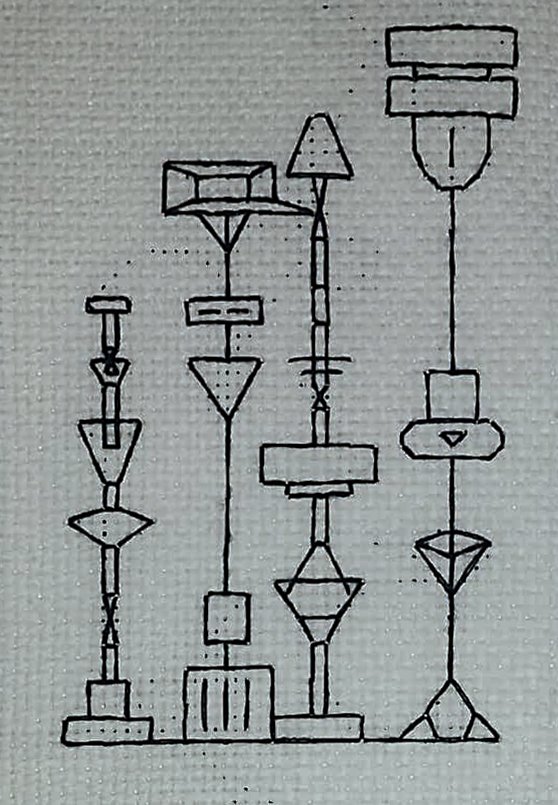Dilettantism︙Group Exhibition
Dilettantism is defined as being a dabbler or more accurately taking delight in the arts. The term dates back to 1734, founded by a group of British noblemen and scholars known as “The Society of Dilettanti” that began an elite dining society and collectors of art.
Around the 1740’s, members of the group began pooling their money together to fund selected painters and later financing the Royal Academy for the Arts. In the early 19th century, the Society began funding expeditions and excavations to the Mediterranean and largely investing in antiques. A still existing Gentleman’s club, the Society of Dilettanti continues to make regular donations to schools and art based institutions.
Although we are not dabblers we do sometimes work outside of the mainstream, operating on a platform of shared experiences that one takes delight in to create personal narratives, and self representation to build communities. Borrowing this term for our premier exhibition, The Aerogramme Center (like The Society of Dilettanti), is an arts collective that seeks to support and uplift artists and writers on a digital platform during the pandemic closures.
We are pleased to present, Dilettantism, a virtual collection of works performed through autobiographical accounts that range from transgressive issues, diversity to the control of mass media. When combined, these works challenge the way people see themselves situated in a wider social context.
Philip Spangler
Night Drawing 1
Charcoal on Rives BFK, 30"x44"
2020
Night Drawing 2
Charcoal and chalk in Rives BFK, 16"x10"
2020
The drawings are from photographs that I have taken while night driving. Often through rural parts. I will find a stone face or outcropping, illuminate it with my truck headlights and snap high contrast images. I have a collection of photographs, but only two of them have made it into drawings. What I like about these drawings is that the stone formations manifest as comets, or forms that are extra terrestrial.
Outside of long drives at night, I do enjoy hiking. When hiking I always seem to come back with rocks that I collect along the way. The rocks are never of a mineralogical value, rather they carry a connection to place and are usually just interesting forms. The sculpture is of a rock that I molded and replicate in bronze. The bronze rock has been chrome plated, and mounted to a mirror on a pentagonal table of which I also fabricated. It looks like an asteroid or some sort of space rock.
Knowing and Unknowing (detail)
Knowing and Unknowing
Bronze casting and chrome plating of rock, mounted on mirror and found pentagonal table
2020
Philip Spangler earned a BFA in Sculpture from the College of Design, Architecture, Art and Planning at the University of Cincinnati in 2008. He has exhibited his sculpture in group and solo exhibitions in a number of Cincinnati venues including the Reed Gallery at the University of Cincinnati, Nicholas Gallery, Country Club, Prairie, Krafthouse, and the Chidlaw Gallery at the Art Academy of Cincinnati. Spangler is a founding member of CS13, a gallery and performance space that operated in Cincinnati from 2009-11 and remains active as an arts collective nomadically producing, curating, and publishing. In 2009, he was awarded an Individual Artist Grant from the City of Cincinnati. Spangler is currently an MFA candidate in the School of Fine Art at Ohio State University in Columbus, OH.
www.philipspangler.com/ | IG: @the.phil.spangler.rodeoxena brar
The Submissive Hot Latina in Television + Films ; An Exploration of Racial Fetishization from Anglo or Non-Latino Men.
I. Introduction
Across all platforms of popular culture, the Latina being has always been considered exotic and spicy. This is a constant for many Latinx persons in their everyday lives, being viewed as as a spectacle on a daily basis gets tiring and upsetting. I would like to acknowledge that the first step to delving into this exploration is realizing that in an Anglo driven world, the main protagonist within many media outlets specifically films and television shows are usually Caucasian. This being said, it is important to note that we can only explore such topics as this by realizing that Latina narratives in the media only speak to the ways in which the minority exists solely for her Anglo counterparts. Latinas being portrayed in popular culture specifically television, films and pornography only enhances and embraces the concept of racial fetishization, making it seem normal to the Anglo audience hence enforcing a negative stereotypes upon the community as a whole.
II. Government Intervention and the Start of a Stereotype
This stereotype of the exotic, spicy Latina originated from the introduction of Brazilian actress Carmen Miranda, also known as “The Lady in the tutti-frutti hat.” Miranda personified the spicy Latina stereotype being loud, vivacious, curvy and exotic. Her image was used to better enhance U.S. relations to Latin America, portraying her as an exotic character that wore hats made of fruit and tight fitting clothing that emphasized her breasts and her hips. The relations between the United States and Latin America throughout history have not been great. Jumping back to the 19th century, this time period caused tension between Spanish speaking citizens and the united states as a whole. Due to things like the Mexican-American war, the California Gold Rush and the treaty of Guadalupe Hidalgo which fostered anti-Mexican sentiments and blatant racism, the tensions were on the rise. There is evidence of Latinos being portrayed in early Hollywood films as lazy, dumb and dangerous because of the outright fear and hatred towards Mexican Americans completely grouping up an entire population that isn’t even from the same region. This caused the Mexican government to become completely outraged by the portrayal of their people in Hollywood Films that it issued an embargo on offensive Hollywood films in 1922. In the 1930s, this stereotype got a spicer makeover promoted by Franklin D. Roosevelts Good Neighbor Policy in 1933. This is when we as a nation were first introduced to the concept of Tropicalism and the seductive Carmen Miranda.
Since then, we’ve seen a long line of over sexualized Latinas in the media. Over sexualizing of the Latina tends to be the main personality traits of these women in their on screen role. An example of this is the entire cast of Devious Maids. Devious Maids is a television show about the wealthiest families in Beverly Hills dirty secrets. The keeper of these secrets are put into a position of power and these are the maids. UNSURPRISINGLY the entire cast is made up of Latinas, Hollywood’s inherent racism is always so fun to see. The portrayal of Latina women being submissive and often times cast as a weaker or lesser character like the racist imagery of the maid or housecleaner is one I will dive into later in this essay. For now I want to focus on the hot position of the submissive hot Latina. These characters are all very hot and their whole role is dependent on that one character trait. They are viewed as as objects and are even
Carmen Miranda, 1944.
sought after by the married white men in the show that cant resist their hot maid. The spicy Latina stereotype is very harmful to Latina women viewing these shows, it objectifies Latinas and promotes the idea that Latinas are as exotic and consumable as jalapeño peppers. This is exactly what objectification means; “to reduce someone for an object for consumption.” These characters are doing just that, hyper sexualizing the woman to be consumed by anyone and striping them of a personality that goes beyond their race.
III. She’s So Spicy!
The image of the Latina women has been ever so engrained in popular culture for the viewing pleasure of the Anglo man indulging in these programs. Often times we see the Latina character using their over sexualizing, “bad” accent and typical exotic characteristics as their main personality traits like Sofia Vergara in Modern Family and in the media for example. An article published in Huffington Post states; “The habit of using her already hyper sexualized figure for laughs is troubling… Vergara, and all Latinas, are more than their bodies or possible sex appeal but her actions on-screen do little to dispel the stereotype. She was willingly objectified during the Emmys in 2014 when she stood on a revolving platform.” The article continues; “ It wouldn’t matter if Vergara was the only person poking fun at herself, but doing so has given others comedic license to do so as well. And the result is the normalization of laughing at thick accents.” Although the casting of these roles shed light on the Latino community and launched some of our own into western stardom, this fame comes with a high price.
In the television show Desperate Housewives, the only Latina (and only person of color) in the series is Gabrielle Solis played by Eva Longoria. Gabrielle is introduced into the series with the line; “Gabrielle Solis, who lives down the block, brought a spicy paella.” With this introduction we learn a lot about the character Gabrielle Solis. She is immediately constructed as Latina in her dress, mannerisms and by the food she contributes, a food which originated in Spain and not Latin or Central America. Although the women in Desperate Housewives are arguable in some way sexual, Gabrielle’s libido is on fast-forward in a way different from her cast. The character of Gabrielle Solis is tactical, risky and sensual. The actor, Eva Longoria and her character, Gabrielle present a meditate, pan-ethnic identity in the process of topicalization. Both the role and the public appearances are consistent with one another. Through these representations, both as character and celebrity, Gabrielle/Eva becomes a key tropicalizer, embodying pan-ethnic traits of Latinidad that draw from and affirm dominant stereotypes of Latina-ness. Debra Merskin, author of “Three Faces of Eva,” puts it like this; “Sex, Passion manipulation and physical beauty are common to each of the (Desperate Housewives) characters, who are coded with particular types of clothing postures, motivation etc. This portrait epitomizes stock Latina attributes that set the stage for the character of Gabrielle to appear to the Anglo audiences as natural.” The naturalization of these characteristics only make it easier for the media to embrace them as a whole.
IV. The Submissive Latina
There are a plethora of examples when it comes to the subservient Latina in television and movies. Films such as Maid in Manhattan, Down and Out in Beverly Hills and First Wives Club all feature a Latina maid in the cast. These constant depictions of Latinas as the help only solidifies the idea that Anglo people remain in unquestioned centrality in American films and television shows. Anglos are the norm within the media and placing a person of color, specifically a Latina, within a cast full of Caucasians the “obvious choice” would be to cast her as the cleaning lady, housekeeper or maid. We see this notion being both ridiculed and praised by television shows like Family Guy which features the maid Consuela who is depicted as not knowing English, wearing a maids uniform and constantly cleaning. These depictions of Latinas are hurtful to the community viewing these films and television series yet are also seen as a norm since it has been the ideal cast of the Latina within Hollywood.
This concept first starts by recognizing how Angloness is presented as standard, and in analyzing it, then we can come to an understanding on how racial “others” are constructed. By continually casting Latinas to play such submissive roles, Hollywood is thus perpetually accepting and embracing Angloness as the norm. The image of the Latina maid in the media beginning from the 1980s 4 performs a variety of different narrative purposes, some of which have been portrayed by different ethnic groups in the past. Each of these narratives speaks to the ways in which the Latina maid or Servant only exists for her Anglo counterparts. Rosa E. Soto broke this idea down into three sections, stating “ First the Latina maid clarifies the general Anglo main protagonist, who most likely is her employer, as a “classed” individual in that she signifies the class status that the Anglo protagonist has achieved…Second, the Latina maid serves the function of allowing Anglo protagonists and characters to see themselves and to be represented as good and altruistic individuals worthy of care and devotion from their servants….Third, the Latina maid serves as an ethnic flavor for the Anglo protagonists.” Soto breaks this down beautifully by explaining how the presence of the maid only exists to better enhance the portrayal on the Anglo protagonist, using the Latina as a seasoning for the whole production. Additionally, since Latinas are so sexy, the Latina maid exists to function in film and television to affirm the power of love to resolve all manner of inequality. In other words, drama and love triangles are yet another personality trait that come with this character. In many television shows and movies we see the maid breaking up a happy marriage, being the seductress etc. etc., now, these concepts can be extremely harmful to the audiences viewing these programs. This “Love solves all” stereotype signifies that ethnic and class differences will melt away in the light of love, which may be true in some cases, but is harmful when coming from such a dynamic power structure as employer and maid. The representation of the Latina maid exists within the context of other ethnic maids in films of the twentieth century, often serving as a trope for the structuring of an Anglo, classed identity.
March Cherry (Executive Producer). 2013-2016. Devious Maids
V. All Work + All Play
Beneath the analytical, research and fact based data presented here is the underlying sexual attraction Anglo men have to something that is exotic that gets them off. The keyword here is something rather than someone. The term exoticism is defined as “ the quality of being attractive or striking through being colorful or unusual.” The term exotic is thrown around often when it comes to pornography and sex work. Exotic is what Anglo men crave, making them participants in what is called exoticism. Unpacking this idea a bit more, when someone is participating in exoticism they most likely have a racial fetish which means being attracted to someone solely based off of their race or ethnicity, seeing them as an object rather than a person. This disgusting racial based fetish is even more apparent within the world of pornography and sex work. Popular porn sites like PornHub even have Latinas listed as their own category, literally classifying them as solely their ethnicity for the ease and viewing pleasure of the Anglo man. Having such categories and derogatory “story lines” has such a harmful impact to young Latina sex workers. The blatant fetishization of Latinas and other minority groups Is normalizing the submissive, sexy, lesser “other” character and creating something that is simply fuckable to Anglo men specifically. In many pornography films the Latina is often portrayed with one or all of the follow attributes according to data collected by Sujeiry Gonzalez, “ 1.) Latinas are depicted as wearing Bandanas you know because all Latinas are cholas. 2.) Have you heard? Latinas have big booties. 3.) We’re all illegal immigrants 4.) were all spicy good girls. 5.) No hablamos ingles. 6.) We are here to please 7.) We are always maids.” 6 You would never see a Latina being depicted as the high payed lawyer or naughty professor in adult films like these, rather, the industry saves those roles for the Caucasian women, those of the higher class. Latinas are viewed as submissive and pleasing, readily available for the enjoyment and easy access of the men partaking in the films.
Giving the Latina these attributes are extremely hurtful, making us seem as if we only exist to be fucked without attention to anything else other than our race. The easy access to the Latinas in these films, many and often times by white men is devastating and borderline nonconsensual when it comes down to the story line of the film ie. “Young Latina Maid gets down and dirty”, “Slutty Room Service” etc. In fact, a simply search on PornHubs website for “Latina Maid” revealed over 10 pages of search results. The hurtful, upsetting and racist imagery we see depicted in the adult film industry is yet another way of further damaging the ego of many Latinas. Celine Shimizu puts it like this; “If we limit understanding of racial sexuality within good or bad, abnormal and normal, or right and wrong we may also limit how to enjoy, appreciate, and more fully understand our own sexuality as women of color.”
VI. Conclusion
As someone who has continually experienced the devastating effect of racial fetishization, I can whole heartily say that performing to others everyday of your life gets tiring and overwhelming. Bringing with it a slew of emotions and hardships that many others (Anglos) do not have to face. Existing to solely be a spectacle and indulgence for the Anglo audience is something that gets overwhelmingly difficult to deal with and come to terms with as the years go on. Sexuality, passion, sultry-ness, language barriers, submissive. All of these keywords and more are what make a Latina a Latina in the medias eyes. The spicy firecracker of a woman who will get down on her knees at the drop of a white mans hat is what the media has and is continuing to portray across all platforms of entertainment whether it be films, televisions shows or pornography. Dismantling the Anglo centered-ness of popular culture is just the first step in combating this racial fetish of Latinas. The embracing and normalizing of racial fetishization for the sake of tradition or storyline is something that is deeply, deeply harmful and traumatizing for young Latinas viewing these programs. Analyzing and unpacking the portrayal of Latina women in Hollywood and beyond only enforces the notion of white fragility, thus creating these submissive, offensive characters for the sole purpose of the Anglo man to consume.
Bibliography
Dines, Gail, et al. Gender, Race, and Class in Media: a Critical Reader. SAGE Publications, Inc., 2018.
Gonzales, Felisa. “Hispanic Women in the United States, 2007.” Pew Research Center's Hispanic Trends Project, Pew Research Center, 6 Feb. 2014, www.pewresearch.org/hispanic/2008/05/08/hispanic-women-in-the-united-states-2007/.
Gonzalez , Sujeiry. “7 Stereotypical Things That Happen to Latinas in Porn.” LATINA, 21 June 2015, www.latina.com/lifestyle/love/latina-stereotypes-porn.
Shimizu, Celine Parreñas. The Hypersexuality of Race Performing Asian/American Women on Screen and Scene. Duke University Press, 2007.
Soto, Rosa E. “Maid to Be the Maid? .” Contested Images: Women of Color in Popular Culture, by Alma M. García, AltaMira Press, 2012, pp. 254–256.
Xena Brar (she/they) is a South-east Asian / Ecuadorian multidisciplinary designer based in Brooklyn, NY. They have obtained their BFA in Graphic Design from The Maryland Institute College of Art located in Baltimore, MD in May of 2020.
https://06051998.co | IG: @bedfullofdirtMarko Vesić and Aleksandar Lazar
Aesthetics of Nobody - Becoming One
Video and Sound, Duration: 3:30
2020
Aesthetics for Nobody is a project started with the goal to deaestheticize and clean the hyperaestheticized space for mass-media - the permanent circulation of useless and false information (using the same method of hyperaestheticized: through multiple social media and communication channels, read: by spamming and subverting) of the hegemony of the media’s control or, rather, to create a different kinds of conceptual content whose common premise is technospirituality - a postmodern concept which as a new artistic dimension in contemporary art.
The public is expected to reflexively consume the content which means, that despite the idea of a constant flow of information and content, they’ll briefly (preferably for longer) dedicate themselves to the stylized and aestheticized depiction of the mandala and the spiritual sound therefore connecting with the art piece on a certain level (uniting with piece/peace).
The conceptual framework realized according to the words play the role of re-examining the spiritual space, affect or effect, the aesthetic of the mandala and the possibility of language or speaking about it, and they also represent the propositions and intentions of our work. The text is incorporated into the mandala itself as well as into the logic of algorithms written using pseudocodes that should simulate the way virtual reality is constructed and how these algorithms construct our participation and reality on the Internet.
The idea of the work is that instead of a lot of unnecessary, unsubstantiated information from the Internet, the public consumes the content of this post-conceptual art that should direct a person towards themselves, their own aesthetics and opinions, but which isn’t there just for that purpose but is also a critical opinion of these artists towards all negative aspects of the mass media, politicization and hyperaestheticizition of life and reality as such.
Spread Virial
Pseudocode algorithms
2020
Art of Isolation
Pseudocode algorithms
2020
Aesthetics of Nobody
Pseudocode algorithms
2020
At this very moment, when the world seems to have come to a halt, when airports, shopping malls, museums, and all other places have become non-places (here we’re referring to Robert Smithson) and when life no longer plays out in public spaces, virtual reality has manifested itself as the dominant and only reality we live in. That isn’t something new. But the problem is, however, a false media simulated of reality that is, to the noncritical public, offered as the only true and self-explanatory one throughout the mass media content.
When we speak about problems caused by Covid-19, as a global community, we commonly speak through political and economic discourses. It appears to be that signifiers such as the market, stick exchanges and industry are more important, that we are least focused on society itself and the problems it is facing in the age of isolation, which primarily means a problem of public informing and knowledge that exist as the only potential of society itself. What is often overlooked is consumerist culture of the mass media, a series of different media projections of reality and truth (which are not actually truthful) - the culture becomes fragmented into multiple constructions of that media, which have a political and ideological background.
Through different creative activists within the field of sociability, our project’s goal is to help consumers (the ones that agree as well as the others that don’t) to develop a certain critical dimension over reality, to doubt and critically consume the content but principally to get interested in themselves as well as society.
Consume Wisely
Pseudocode algorithms
2020
The first place we tend to make the content that we spoke about available to everyone through mail and SMS spam, newspapers (the ones with largest circulation), radio, websites (that would be hacked) but also to distribute through posters, stickers, and other materials that we would spread around the city and further - supervise power of art.
The graphic itself will be available to everyone on the Internet for a download, so that everyone can participate in collective aesthetic and intellectual cleansing (we like to say: “spread viral and consume wisely” since we are actually a new virus you need to be infected with). We have full sport as well as required social infrastructure for our activities. On the other hand, the idea is to organize performances in cultural institutions, through presentations of stylized mandala projections, spiritual music and critical-philosophical or theoretical stances presented as pseudocodes whilst the audience will be given a chance to discuss, critique, think, participate, and unite with the piece in any way, creating a special platform which eliminates all class or other differences in order to achieve the highest of social aims, a society without hierarchical powers.
In the final sequences, lectures in public spaces are to be held, containing experts from numerous different fields of humanities and natural sciences (ecology, molecular biology, biochemistry, and also philosophy, sociology, transdisciplinary humanities).
These lectures would be accessible to all, so that knowledge would be presented as the power of life, as well as the power of art itself. Each lecture would be held in the form of a theoretical speech, complemented by visual and audio content. Our postconceptual art is on the trail of poststructuralism and contemporary theoretical practice (Baudrillard, Deleuze, Foucault, Bourdieu, Ranciere, Welsh) and it represents on the potential channels of intellectual discourse.
Marko Vesić is a contemporary music artist, composer, and postconceptual artist born in 1999 in Belgrade, Serbia. Before the studies of composition at the Faculty of Musical Arts, he attended the theoretical section of musical high school “Jospi Slavenski” and 14th Belgrade Grammar/Gymnasium School at math and science section where he graduated as valedictorian.
He has presented at the International Symposium Vlada Milošević in Banja Luka (Southeast Europe) and was elected to present his work in symposiums in Sarajevo (South Europe) and Moscow (Conference for young researchers). His works performed on multiple festivals such as KoMa, Festum, Opus Tessellatum in notable cultural institutions in Belgrade, and also on exhibitions and other events.
Aleksandar Lazar (Smederevo, 1991) finished successfully his BA and MA studies in the class of Dragan Momirov at the Department of Graphic Arts within the Faculty of Fine Art in Belgrade where he is attending his PhD studies at the moment.
He has multiple solo exhibitions and audiovisual performances in different cultural institutions (Shells Left Behind; audiovisual performances, CZKD, Beograd, 2019; Flamingo; audiovisual performances, Kvaka22, Belgrade, 2019; Anatomy of Chaos; audiovisual performances, Dom Kulture, Studentski Grad, Belgrade 2019; Energetic Structures; Graphics, Galleries of Contemporary Arts in Pancevo and Smederevo, Center of Graphics and Visual Exploration, 2018, 2017).
Gabriel Soto
Galloping Rider 3
Graphite on paper
2019
Galloping Rider 1
Graphite on paper
2019
Galloping Rider 2
Graphite on paper
2019
Galloping Rider 4
Graphite on paper
2019
Gabriel Soto is an artist living and working in Chicago. He received a BFA in painting at the Pennsylvania Academy of the Fine Arts in 2017 and is currently the Operations and Systems Coordinator at Compound Yellow - an open source community space for arts, education, ecology and opportunities for social engineering.
www.gabrielsoto.work | IG: @ga_so_artJackie Chu
The Routine
As I look up to the clear blue sky,
I am reminded of days gone by;
And I check the time today
I look at the minutes that have gone away.
From the snowy roads and the cold brisk air;
I am treading lightly on the snow.
But the air makes it harder to breathe
College life has become routine in that I crave more.
A life with adventure;
In the great unknown.
As life goes on,
We always crave more.
From anything to everything
We are never satisfied
As I look up to the clear blue sky;
I am reminded of days gone by.
As I see, the cycle never goes away,
I keep everything at bay.
Nostalgia
It comes in many different forms
Whether it is from a favorite toy, movie or person
It is a feeling or emotion that tends to bring out people’s true character
It can bring out positive or negative connotations
In songs and memories
You are reminiscent of the times that have gone by
It can go from happy in one instance and then
Sad the next knowing it is the end of a time
In a person’s life.
Whether it happens in a moment
Or lasts a lifetime
It comes and it goes
Masquerade
“A false show or pretense”
“Pretend to be someone one is not”
“The wearing of disguise”
“Behavior that is intended to prevent the truth about something unpleasant or not wanted from
becoming known”
There is no one definition
There are different meanings for everyone
The act of hiding part of something or someone
It happens to everyone
Some days are always going to better than others
Sometimes having to say to yourself
“You’re Okay”
Even when you are not
When hiding behind a smile
Can hide even the most positive persons’ misery
The people who can make a group of people laugh the most
Usually has faced the most misery
Masquerade
It can have many different forms
But mean so many different things to different people.
You do not truly know everyone’s story
The Awakening
As I lay down after a long day,
My mind is racing with a million thoughts.
I reach over to take melatonin,
Knowing that in a few short moments,
I will be at ease.
As I feel my eyelids getting heavy at first
And then letting the hormone hit my body next.
I know that the bitter peace is yet to come.
Laying there, I dream of sweet dreams
Into the morning hours,
I am immersed in what could seem to be a sweet dream,
But turns into a horrible nightmare
As I am struggling to survive being chased down a dark winding street
I am always struggling,
I am struggling to awake,
And to survive everyday
But some days are just harder than others
Why is life so hard?
As I am being chased by a serial killer
I run so far, I feel my chest tighten
And my legs become weaker.
Psychologically, my body is trying to awaken me,
But my mind still seems trapped;
Trapped in the nightmare of life.
My body jolts up in bed,
Yet my mind is still asleep and trapped
Trying to survive.
Jackie Chu, graduated from Connecticut College in 2019 with a BA in Creative Writing. Her collection of poems combine stories and moments that reflect on her experiences post-graduation. Her writings are an outlet for her thoughts while questioning the anxiety so many people feel when leaving school.
IG: @jackiechu12
Teri Anderson
Fake Machine 13
Cotton thread on Aida fabric
2019
Fake Machine 12
Cotton thread on Aida fabric
2019
Fake Machine 14
Cotton thread on Aida fabric
2019
Teri Anderson creates work that looks into the idea of craft in art, textiles, installation and sculpture to create a linear or surreal environment which the audience have to inhabit.
teriandersonsite.wordpress.com | IG: @tinteri13



